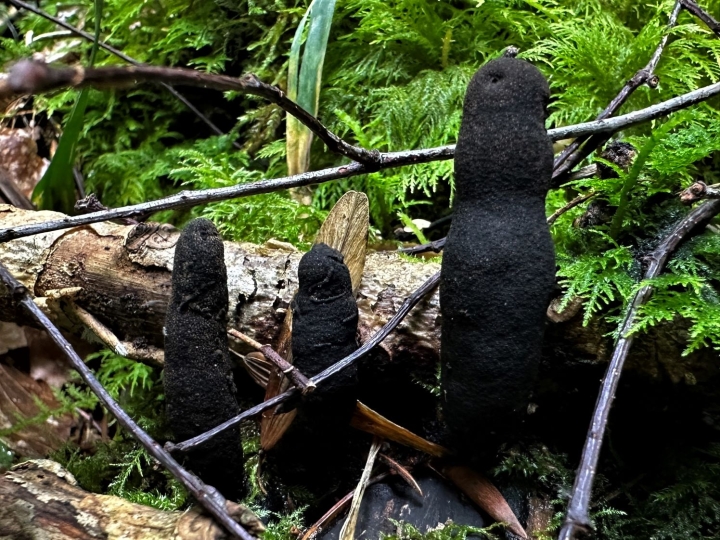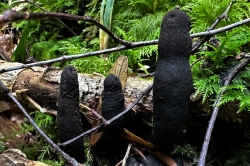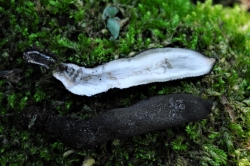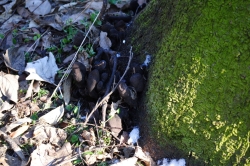Dead Man’s Fingers
A spooky looking mushroom which is often found growing out of dead wood of deciduous trees in clusters.
| Mushroom Type | |
| Common Names | Dead Man's Fingers, Bysedd y Meirw (CY), Próchnilec Maczugowaty (PL), Bunkós Agancsgomba (HU) |
| Scientific Name | Xylaria polymorpha |
| Season Start | All Year |
| Season End | All Year |
| Average Mushroom height (CM) | 3-10 |
| Average Cap width (CM) |
Fruiting Body
What we can see is not the fruit body of the species, but a communal fruit body (called stroma). It hosts hundreds of individual fruit bodies.
The stroma is really variable by shape and size, it could be 3–10 cm tall and 1–4 cm wide. It is more or less cylindrical, but is often finger, club, spindle or even tuber shaped. It is initially off white to greyish, covered with fine grey dust (conidia), turning dark brown to almost black with maturation. The stroma’s surface is covered with tiny pores (the mouth/exit of individual, flask-shaped fruit bodies, called perithecia) which cannot be detected by the naked eye.
Flesh
White and more or less tough. Taste and smell indistinctive. Traditionally it is not considered edible in any part of the world.
Habitat
Saprotrophic on dead woods of various hardwoods (deciduous trees), but preferably Beech, grows out of fallen woods, the roots or stumps of dead trees. It causes a so-called soft-rot (instead of breaking down cellulose and causing brown-rot, or breaking down lignin and causing white-rot, it is breaking down the glucans which act as a binding agent “or glue” between these two).
Possible Confusion
It could be confused with other Xylaria species, most of all the much skinnier Dead Moll’s Fingers (Xylaria longipes).
Frequency
It is very common and widespread in the UK.
Spores
Sexual spores are produced by the asci (singular: ascus), hence called ascospores. Spindle or banana-shaped, some might be flattened on one side, smooth, dark brown with mostly only one oil-droplet (guttule).
Asexual spores (conidiospores) are smaller than sexual spores, they are smooth, ellipsoidal and colourless (hyaline).
Other Facts
There is a study by Debnath S et al (2018) which claims that Xylaria polymorpha (and the other four Xylaria species in India) contains amatoxins or phallotoxins (unfortunately the study doesn’t elaborate which one), also, their study doesn’t mention the actual amatoxin and/or phallotoxin content of the fruit bodies of each species they wrote about. Mentioning the amatoxin and/or phallotoxin content of Xylaria polymorha without mentioning the actual toxin content of the fruit bodies has almost zero scientific relevance. Xylaria species aren’t considered edible in any part of the world and the fact that some started using them as spooky crisps during Halloween won’t change this. We don’t advice anybody to eat Xylaria species, but we are also against fearmongering which might increase the mycophobia (the irrational fear of mushrooms and other fungal species).



























COMMENTS